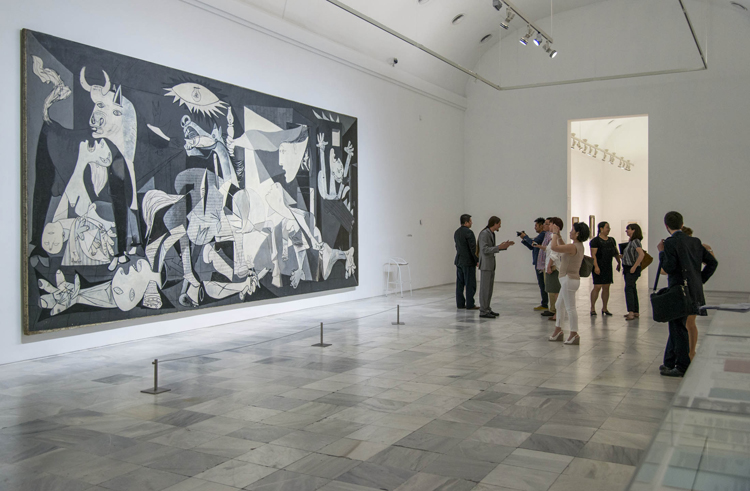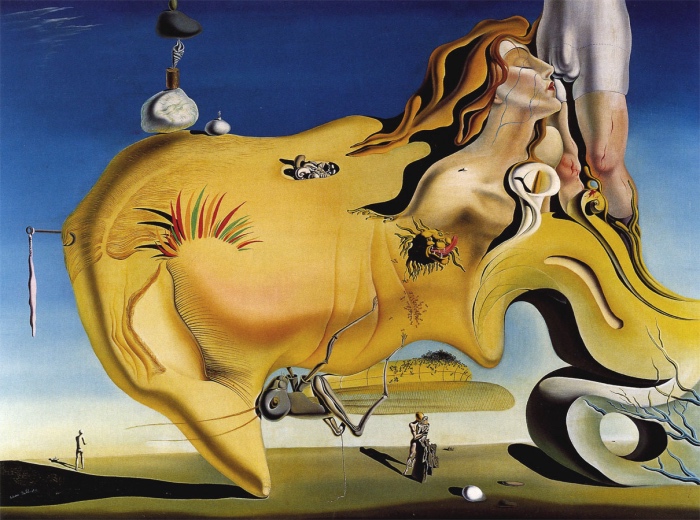Reina Sofia museum works: what you must see
This post is dedicated to those who want to visit Madrid, and here you’ll find everything about the Reina Sofía Museum works to see and how to plan your visit to the museum which is a point of reference for modern and contemporary art.
A beautiful museum, to be visited at your leisure by preparing carefully (remember to book your Reina Sofia museum tickets in advance).
In this post I explain why to visit it, which works to see and how to buy tickets.
REINA SOFIA MUSEUM WORKS: WHAT YOU MUST SEE

Guernica al Museo Reina Sofia di Madrid
The Reina Sofía Museum is one of the most important art collections in Europe and the masterwork of the collection is Picasso’s “Guernica”: the Spanish Republican government commissioned him to paint a painting to exhibit at the Spanish Pavilion of the Paris International Exposition in 1937.
But the museum is not only “Guernica”.
The tour, divided into three sections, allows visitors to choose the most interesting subject, and you can also change the starting itinerary.
Essentially, this is a museum which allows you great freedom of understanding the art of the 20thcentury and following the feelings and interests of everyone, without imposing a chronological order.
Before I point out the must-see works, however, I advise you to book tickets.
MUSEO REINA SOFIA: INFORMATIONS AND TICKETS
The Reina Sofía is located in the Old General Hospital of Madrid, designed by architect Francisco Sabatini, which has been extended by Jean Nouvel with an auditorium, library and new exhibition rooms.
Tickets: it is better not to go to the ticket office on the day of the visit because the fina could be long and you could waste valuable time waiting in line and not in front of the works.
My advice is to book your admission in advance with the Museo Reina Sofia Skip the Line option or select a date from the admission calendar below.
If you would like to book a guided tour instead, you can book a guided tour, which will allow you to discover the secrets and curiosities of the works on display with an expert..
Opening Hours: Monday – Saturday from 10 am – 9 pm; Sundays from 10 am to 2:30 pm; Tuesdays Closed. The Museum is also closed on: January 1 & 6, May 1 & 15, November 9, and December 24, 25 and 31.
The museum also offers plenty of free days, including the International Museum Day, Mondays – Fridays from 7 pm to 9 pm, Saturdays from 2:30 pm to 9 pm, Sundays from 10 am to 2:30 pm, the 18th of April, the 12th of October and the 6th of December.
MUSEO REINA SOFIA OPERE DA VEDERE
Pablo Picasso, Guernica (1937)
The painting depicts the most tragic episode of the Spanish civil war: in 1937 the Luftwaffe (the German air force) bombed the Basque town of Guernica, killing more than 2,000 people.
Picasso describes this event and transforms it into the suffering of the whole humanity shocked by the wars of the 20thcentury.The artist decides not to use colours, but only white, black and shades of grey, emphasizing the suffering and panic of the figures painted.
Salvador Dalí, Face of the great masturbator (1929)
This is an autobiographical painting, painted after spending a summer with Gala, who would become Dalí’s life partner, but at the time she was married to the poet Paul Eluard.
The painting portrays tension between eroticism and death, masculine and feminine, but at the same time the artist pours all his obsessions on the canvas.
You must see it because at school teachers seldom talk about this suggestive painting where nothing is what it seems.

Salvador Dalì, Il grande masturbatore (1929)
Joan Mirò, Man with a pipe (1925)
Mirò is a fundamental artist for the development of Surrealism.
The artist eliminates any figurative element form the painting, such as the horizon and the depth, painting an almost transparent figure of a man.
It’s a surrealist portrait depicting something that looks like an alien rather than a human being, and for this reason it let the observer interpret it always in a different way, making it a masterpiece.
Follow me on:
About me
In this blog, I don't explain the history of art — I tell the stories that art itself tells.


